5 Questions to Answer Before Using Non-Penetrating Guardrail
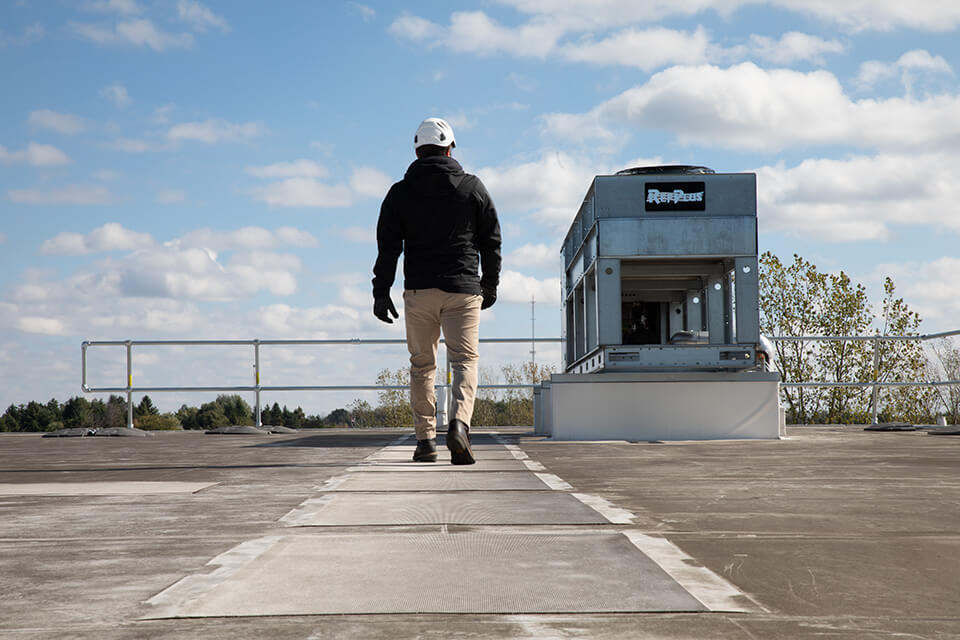
There is no lack of rooftop guardrail options today. This is even true when it comes to non-penetrating guardrail systems. This was not true ten years ago.
For a while, there was a concern that non-penetrating guardrail was not actually safe, which it is. When you got past that, then you had to deal with whether it was OSHA compliant.
Spoiler – it is.
So, if a non-penetrating guardrail is safe and OSHA compliant, then why not use it every time?
Here are 5 questions you need to answer before you decide to install a freestanding guardrail system.
Do you care if the guardrail penetrates your roof?
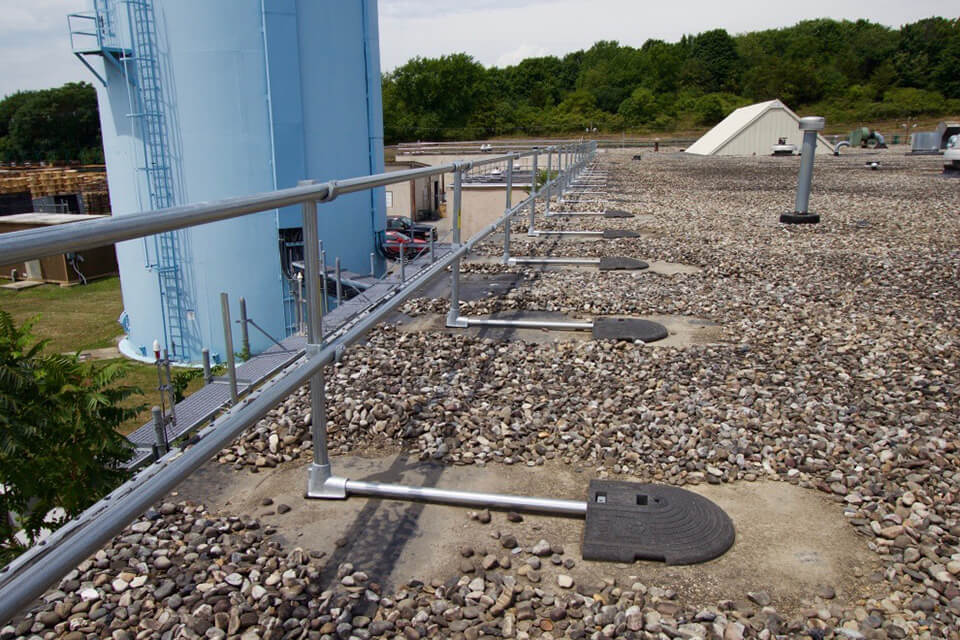
This may seem like a silly question, but it’s real. Not every person cares about what happens to the roof once the project is complete.
Rooftop guardrails typically have a post every 8 feet. This varies based on the system and can be much more frequent depending on the codes you need to follow.
If your guardrail is 150 feet long (let’s assume no corners for the purposes of this example), then you will have 20 posts with 8-foot center maximums. (150 divided by 8 = 18.75. That’s 19 posts plus one on the end.)
Even with the best roofing team, that’s twenty places that will have a stronger chance of leaking. This is not likely to happen in the first couple of years, but who knows? Your environment, the quality of the installation, and any number of other things could affect this.
But, if all that matters is the immediate completion of a project and the long-term health of your roof isn’t important enough, then a non-penetrating guardrail may not be right for you.
Use a non-penetrating guardrail system, like KeeGuard, if you want to protect your roof warranty or have a better chance at a long life with your roof.
Do you have a tall parapet wall at the edge of your roof?
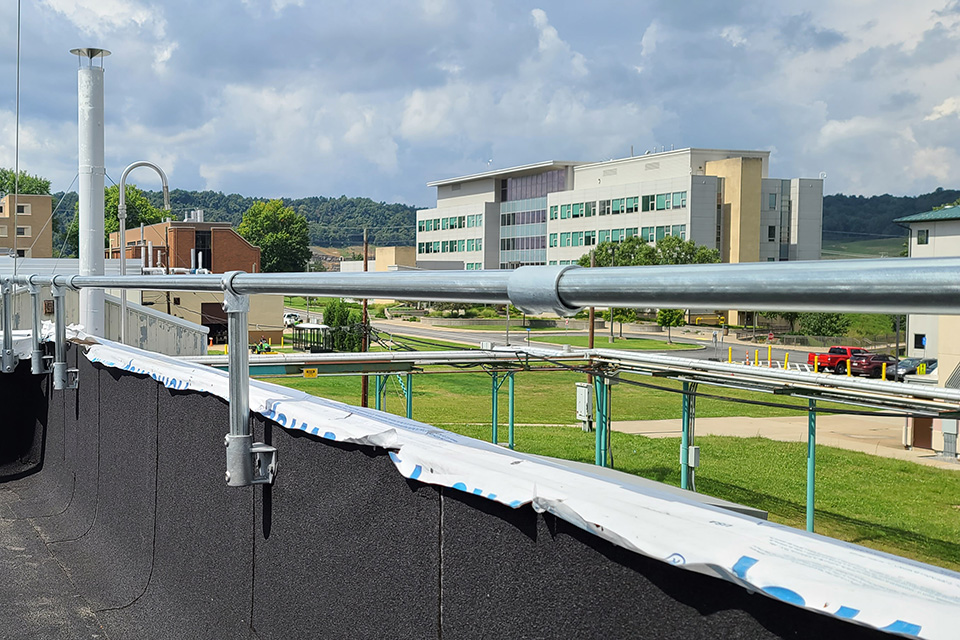
OSHA says that guardrail needs to be 42” above the walking and working surface, plus or minus 3 inches. If you have a parapet at the edge of your roof that is 39 inches in height or more, then a guardrail is not needed.
What if the parapet wall is 24 inches in height?
OSHA also says that a mid-rail is not needed if you have a parapet wall that is at least 21 inches in height. This means that you only need the top rail. You can install a single rail guardrail that mounts onto your parapet wall. This does mean that you will be drilling holes into your parapet. Consider if it's worth having to repair your parapet in the future over spending a few extra dollars in the beginning on a non-penetrating guardrail.
A freestanding guardrail is a good option when you're not confident in the structural integrity of your parapet. Also, if the only place to mount onto your parapet is the outside wall, then a freestanding guardrail would be safer and easier to install.
How much non-penetrating guardrail weight can your roof support?
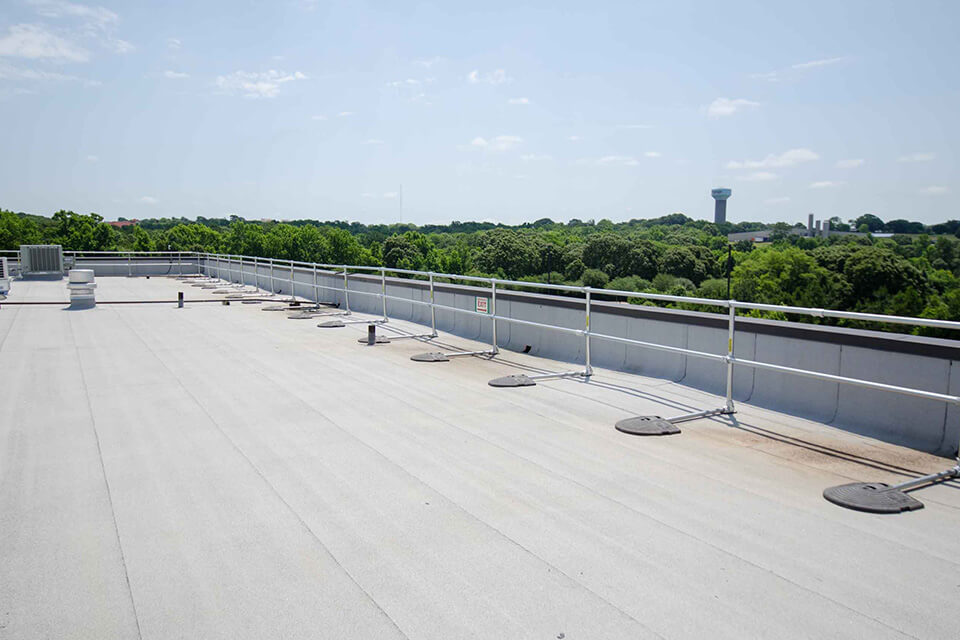
The weight of a guardrail system can impact the integrity of your roof. I had a customer who was given a very specific load limit for a guardrail system because of the other components going on the roof. It was an older roof, and the customer did not want to take any chances.
Non-penetrating guardrail weight can add up with the wrong system. Even with a good system, this could jump up if you have to meet building code requirements of 50 pounds per linear foot.
Some non-penetrating guardrail systems require heavy weights at the base of the post. For example, we use KeeGuard Post Weight for tight spaces on your roof.
These heavier weights can cause specific areas on your roof to develop depressions. Water can gather in these depressions, causing potential future damage to your roof if there isn’t a way to deal with this water.
Our post weight design spreads the load over a 2-foot square space to avoid this issue. We also have channels in the bottom of the weight that allow water to flow underneath the weight.
If you’re concerned about weight, then I would advise using a ballasted guardrail that employs light weights. KeeGuard Counterbalance Guardrail uses a 30-pound weight that is made from 100% recycled PVC.
Will the non-penetrating metal weights damage my roof?
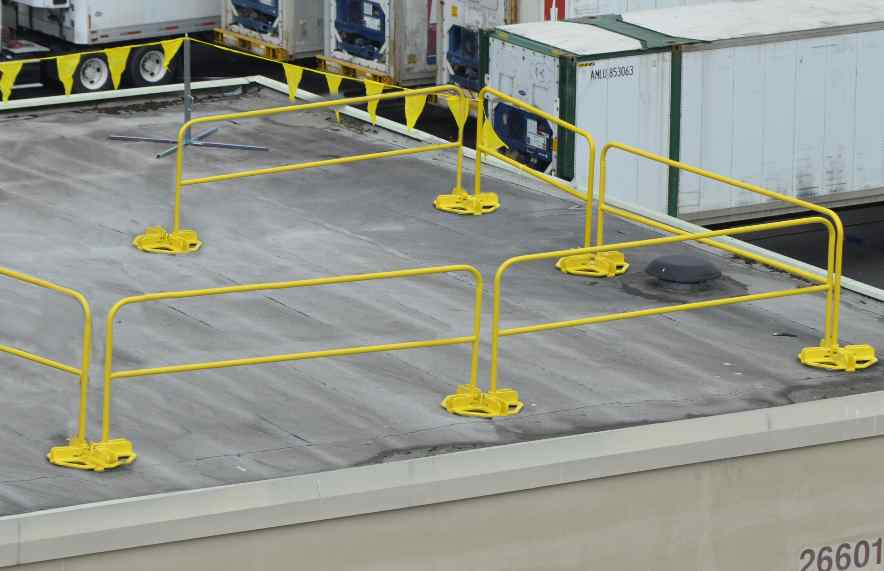
In short, it’s possible.
Some metal weights have a circular ring around the bottom, which is all that comes in contact with your roof. This means that all the weight of that guardrail is pressed into your roof in that small surface area. Not only will water build up here, but it will not be able to flow past the weight.
Also, to avoid the metal coming in direct contact with your roof, some of these weights use a rubber coating. This should be a good thing. However, these coatings can melt at high temperatures, causing them to act like glue. Now your “non-penetrating guardrail” is adhered to your roof surface, damaging the roof when you try to move it.
So, what do you do? Make sure that the ballasted guardrail that you are using has the best material for the safety of your roof. We’re partial to KeeGuard.
Will the wind blow my non-penetrating guardrail off my roof?
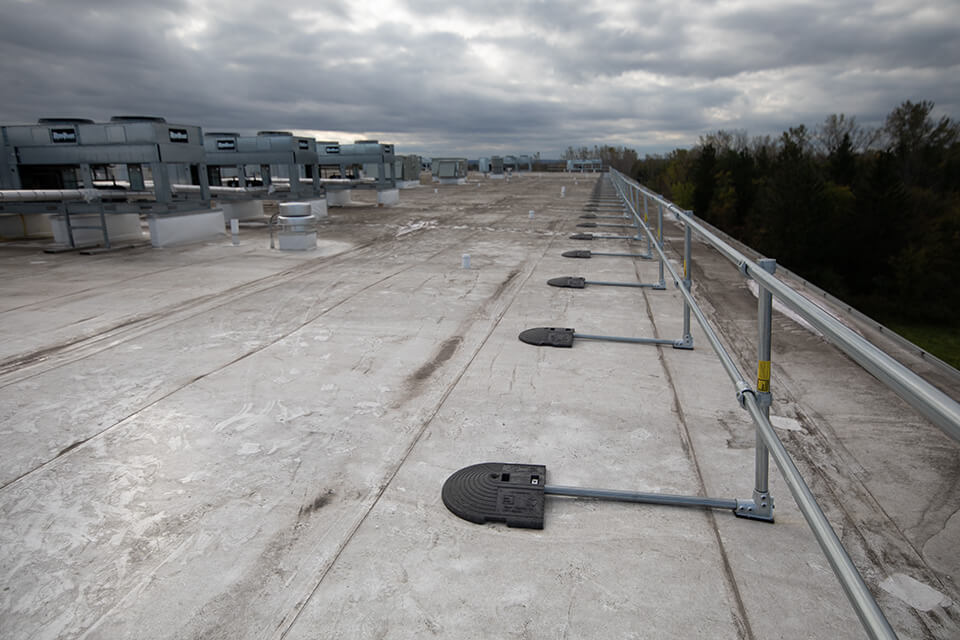
It can...if you don’t account for it.
We had a customer that reached out to us because their safety yellow non-penetrating guardrail just blew off their roof. Thankfully, no one was hurt and there wasn’t a lot of property damage. But, as you can imagine, this situation could have been disastrous.
The solution from the manufacturer of that guardrail was to glue the bases onto the roof. This seems like it defeats the purpose of a non-penetrating guardrail.
Don’t worry, though, you can still use a non-penetrating guardrail with high wind conditions. Ask for wind calculations to be done if this is a concern for your location. The height of your building, the environment around you, and your specific geographical location should be taken into account.
Imagine how much money, time, damage, headache, worry, and potential OSHA inspections could have been saved by our customer if they had the wind calculations completed before installing the cheap yellow safety rail.
This doesn’t have to be you.
Ask one of our fall protection specialists about how we can provide wind calculations and overcome an obstacle before it becomes a problem.
What do you do now?
I know. This is a 6th question. However, all of this information is useless if you don’t know where to go from here.
You should know that there are non-penetrating guardrail systems that are safe, compliant, and very roof friendly.
All the above questions will help you think about which guardrail you choose. This way you don't grab the cheapest option without knowing what the true potential cost could be.
Contact one of our experts to find out how a non-penetrating guardrail can help you complete your project, protect your roof, and provide a safer work environment.



